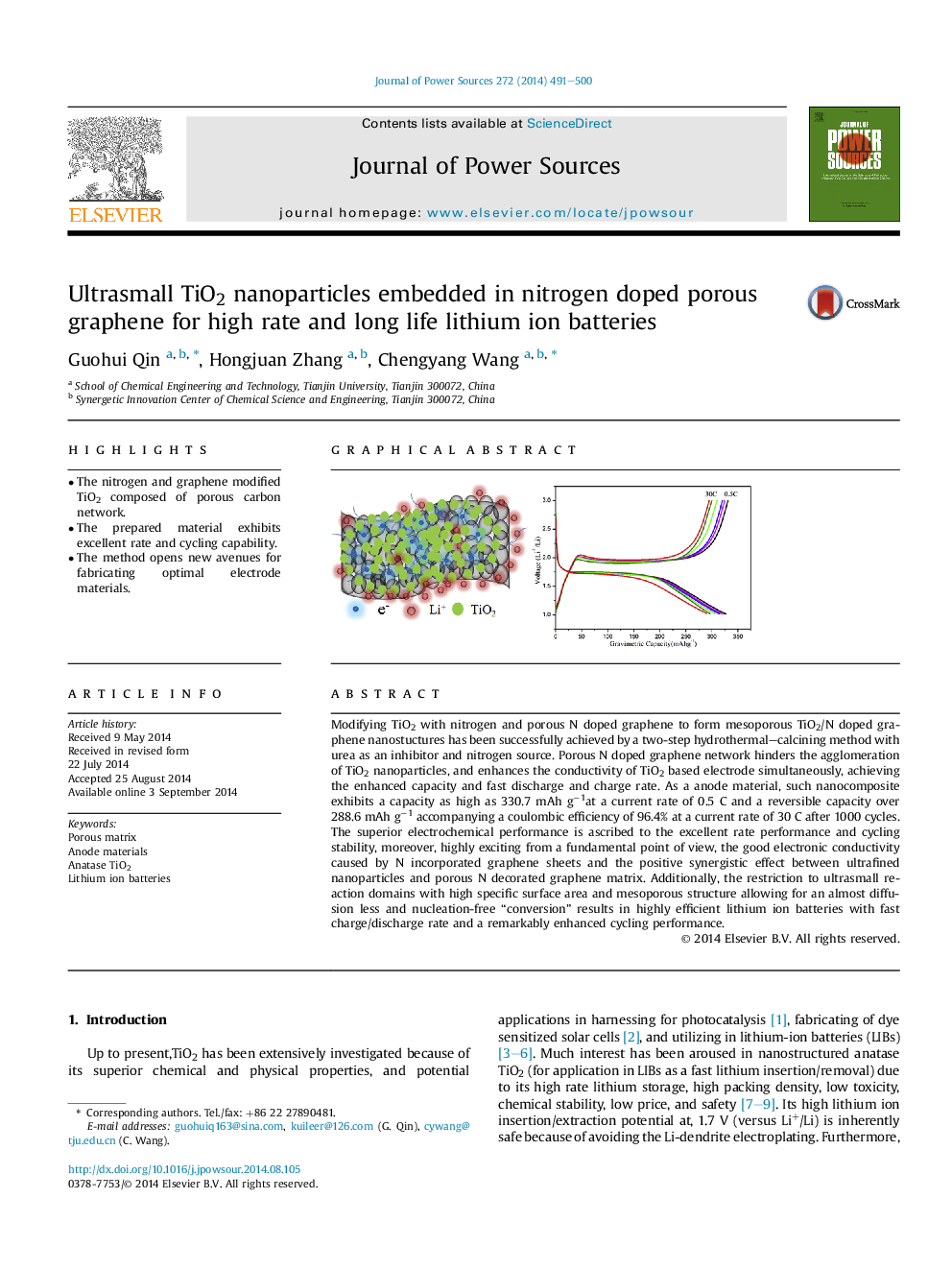| کد مقاله | کد نشریه | سال انتشار | مقاله انگلیسی | نسخه تمام متن |
|---|---|---|---|---|
| 1283991 | 1497960 | 2014 | 10 صفحه PDF | دانلود رایگان |

• The nitrogen and graphene modified TiO2 composed of porous carbon network.
• The prepared material exhibits excellent rate and cycling capability.
• The method opens new avenues for fabricating optimal electrode materials.
Modifying TiO2 with nitrogen and porous N doped graphene to form mesoporous TiO2/N doped graphene nanostuctures has been successfully achieved by a two-step hydrothermal–calcining method with urea as an inhibitor and nitrogen source. Porous N doped graphene network hinders the agglomeration of TiO2 nanoparticles, and enhances the conductivity of TiO2 based electrode simultaneously, achieving the enhanced capacity and fast discharge and charge rate. As a anode material, such nanocomposite exhibits a capacity as high as 330.7 mAh g−1at a current rate of 0.5 C and a reversible capacity over 288.6 mAh g−1 accompanying a coulombic efficiency of 96.4% at a current rate of 30 C after 1000 cycles. The superior electrochemical performance is ascribed to the excellent rate performance and cycling stability, moreover, highly exciting from a fundamental point of view, the good electronic conductivity caused by N incorporated graphene sheets and the positive synergistic effect between ultrafined nanoparticles and porous N decorated graphene matrix. Additionally, the restriction to ultrasmall reaction domains with high specific surface area and mesoporous structure allowing for an almost diffusion less and nucleation-free “conversion” results in highly efficient lithium ion batteries with fast charge/discharge rate and a remarkably enhanced cycling performance.
Figure optionsDownload as PowerPoint slide
Journal: Journal of Power Sources - Volume 272, 25 December 2014, Pages 491–500